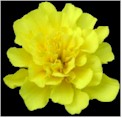

There are about 2000 species of flowering plants, of which nearly 215 are endemic to these Islands (Rao and Srivastava, 1996). Of these flowering plants, nearly 110 orchid species are naturalized here (Shrama, Singh, Sreekumar & Nair, 1998).
Despite the rich natural base of floriculture, organized cultivation of flowers and ornamentals towards commercialization is yet to begin in Andaman and Nicobar Islands. Since agro-climatic conditions of these Islands are similar to those in South-East Asia like Thailand, Singapore, Malaysia and Indonesia, there is great scope for floriculture especially orchid cultivation out here in a commercial scale. Thailand alone exports orchid spikes worth $ 39 million, followed by Singapore with $ 16 million. Besides, the indigenous wild orchids are hardy, easy to propagate and grow, resistant to many diseases and insects, and therefore good germ-plasms for breeding purpose.
A few orchids of Andaman and Nicobar Islandsó
Arachne spp.
Bulbophyllum lepidium
Cymbidium aloifolium
Dendrobium secundum
Eria andamanica
Geodorum densiflorum
Malleola andamanica (endangered sp.)
Rhynchostylis retusa
Vanilla andamanica (endangered sp.)
Exotic Dendrobium hybrids, Vanda Miss Joaquim, Cattleya, Epidendrum etc. have also been successfully introduced here and performing well. Plantation crop like coconut can be used for growing orchids as intercrop, providing shade as well as standards (Sharma etal, 1998). Other than orchids, a number of flowers, ferns, cycads, succulents, bamboo and ornamental medicinal plants grow naturally in forests of the pristine Islands of Andaman and Nicobar, which need proper attention and perpetuation.
